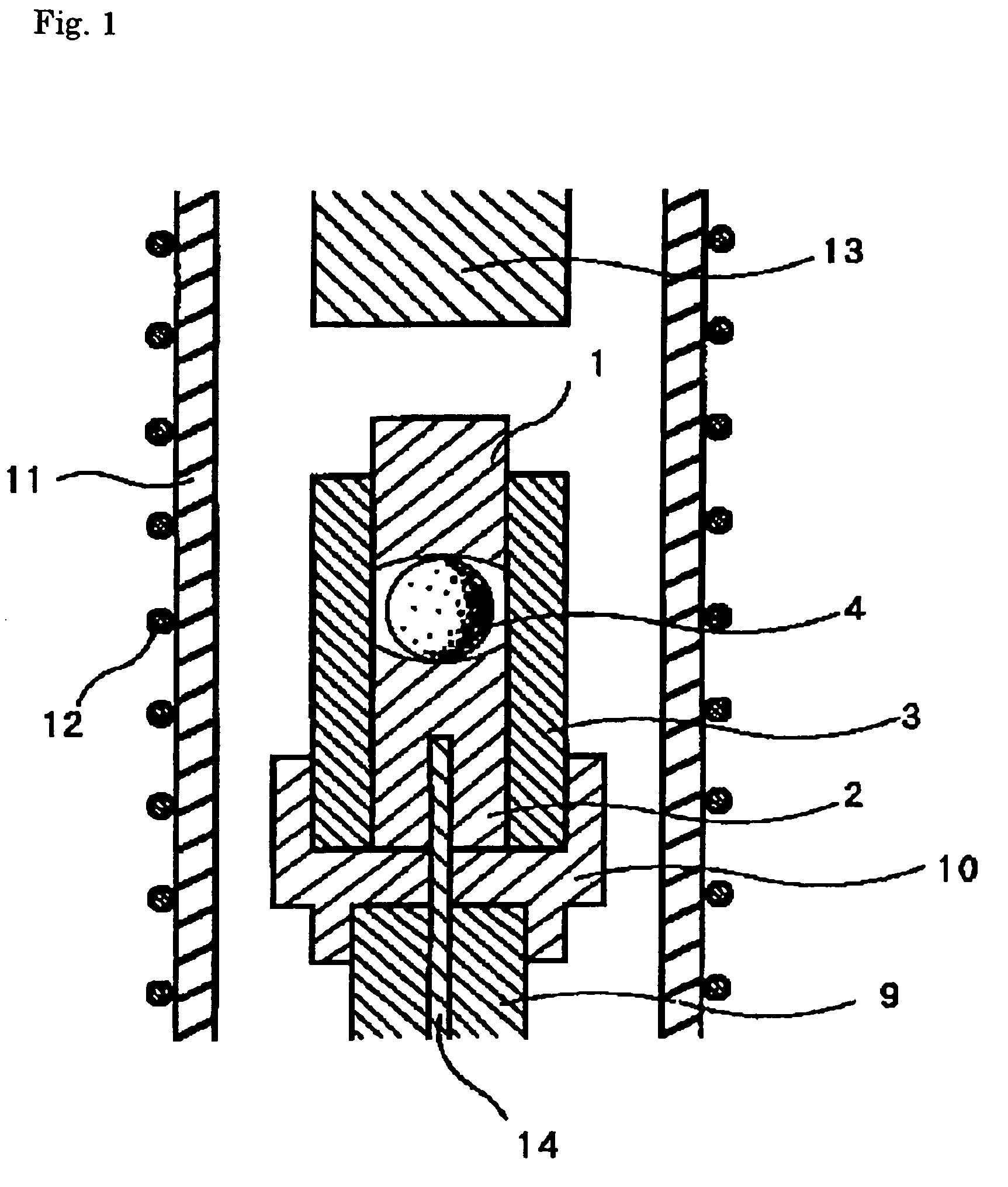Optical glass, preform for precision press-molding, process for the production of the preform, optical element, and process for the production of the element
a technology of optical glass and precision press molding, applied in the field of optical glass, can solve the problems of impaired above-characteristic features of precision press molding methods, and achieve the effects of excellent glass stability, excellent glass stability, and high refractivity
- Summary
- Abstract
- Description
- Claims
- Application Information
AI Technical Summary
Benefits of technology
Problems solved by technology
Method used
Image
Examples
examples
[0105]The present invention will be explained more in detail with reference to Examples, while the present invention shall not be limited by these Examples.
examples 1-11
[0106]Oxides, carbonates, sulfates, nitrates, fluorides, hydroxides, etc., as raw materials corresponding to components of the glass, such as H3BO3, SiO2, La2O3, Gd2O3, Y2O3, Li2CO3, ZnO, CaCO3, ZrO2, etc., were weighed so as to obtain a composition having a predetermined weight of 250 to 300 g each as shown in Tables 1 and 2 and fully mixed to obtain a prepared batch, and the batch was placed in a platinum crucible and melted in air with stirring at 1,200 to 1,250° C. for 2 to 4 hours. After melted, a molten glass was cast into a 40×70×15 mm mold made from carbon and gradually cooled to its glass transition temperature. Immediately thereafter, the glass was placed in an annealing furnace and annealed at the glass transition temperature for approximately 1 hour, and in the furnace, the annealed glass was allowed to cool to room temperature.
[0107]Each of the thus-obtained optical glasses was measured for various properties according to the following methods. In these optical glasses,...
example 12
[0125]Each of refined and homogenized glasses that were to give the glasses of Examples 1 to 11 was caused to flow at a constant rate out of a pipe formed of a platinum alloy which was temperature-adjusted to a temperature region in which the glass was stably flowable without undergoing devitrification, and a molten glass gob having a weight of a preform as an end product was separated by a dropping method or a descent-cutting method. The molten glass gob was received with a receiving mold having a gas-ejecting port in its bottom, and a preform was formed while the glass gob was caused to float by ejecting a gas from the gas-ejecting port. The timing of separation of the molten glass was adjusted and set to give spherical preforms having a diameter of 2 to 30 mm. The weights of the preforms were precisely in agreement with the corresponding set values, and all of the preforms had smooth surfaces.
[0126]Each of the thus-obtained preforms was precision press-molded with a press apparat...
PUM
| Property | Measurement | Unit |
|---|---|---|
| refractive index | aaaaa | aaaaa |
| molar ratio | aaaaa | aaaaa |
| weight ratio | aaaaa | aaaaa |
Abstract
Description
Claims
Application Information
 Login to View More
Login to View More - R&D
- Intellectual Property
- Life Sciences
- Materials
- Tech Scout
- Unparalleled Data Quality
- Higher Quality Content
- 60% Fewer Hallucinations
Browse by: Latest US Patents, China's latest patents, Technical Efficacy Thesaurus, Application Domain, Technology Topic, Popular Technical Reports.
© 2025 PatSnap. All rights reserved.Legal|Privacy policy|Modern Slavery Act Transparency Statement|Sitemap|About US| Contact US: help@patsnap.com

